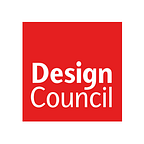Ways of designing: A reflection on strategic and systemic design
Guest post by Bernd Herbert and Mani I, Royal College of Art
In the last few years, strategic design, and systemic design have started attracting a lot of attention in design communities and beyond.
We believe this to be an emerging response to complex, and challenging problems like the climate crisis, the global pandemic and the international economic downturn.
Both design fields are constantly morphing, and adapting, so we wanted to highlight the two discipline;, their similarities, and their differences.
Strategic design is what we do, and systemic design is a way we can do it
Strategic design is a profession, it’s a set of principles in a process to help people solve business, social and organisational design problems.
Systemic design is a process, and/or way of thinking. It uses a combination of designerly tools, mainly from systems and design thinking to engage with complex or ‘wicked’ problems.
Think of the strategic designer as an artist that can create art using a paint brush and canvas, depending on the work they want to create.
Systemic design is like the hammer and chisel, it´s not a perfect tool for delicate precise brush strokes (like Design Thinking), but it is great for chipping away at big ugly blocks of stone, or ‘wicked’ problems.
The four kinds of design
Peter Jones and GK VanPatter described design with four different bounded domains and provide a framework which allows for clarity in design conversations. Based on their work, we’re proposing the following ways of thinking about design:
Design 1.0
Covers visual communication, advertising, assets-based
Design 2.0
Covers human-centred design, to meet customer needs and create value-adding products and services
Design 3.0
Covers organisational and social innovation design. This is where strategic design sits, where service design mixes with systems and others lenses to deliver business strategies, structures, and change.
Design 4.0
Is systemic design, design for social transformation and complex social systems, like policy making, where wicked problems, like healthcare and the climate emergency are addressed.
Strategic design
Strategic designers blend the tools of management consultancy with the human centred design methods of service designers. However, they also see the business as an integrated set of parts, covering its value chains, its business strategy and model. It employs systems-oriented thinking to look at the bigger picture, including the business case, stakeholders, and the environment, but mostly in the best interest of a business.
Some argue strategic design is solely a business discipline, and there is no doubt, that’s where the title is most often used.
However, Dan Hill, in his 2012 essay Dark Matter and Trojan horses argued that strategic designers have the stakeholder focused, systemic, experimental, and innovation tools to de-risk, and help create meaningful, impactful, and wide-reaching social change and should therefore extend into the ‘dark matter’ of the ‘wicked’ problems in society, using systemic design.
Systemic design
Systemic design is the hybrid of several other disciplines or the vertical layer across the various lenses. There are several interpretations of the term including the Design Council’s Systemic Design Approach, which is great as a provocation and cultivating the right mindsets.
Our two favourite sources to dive into systemic design right now are:
- ‘Design Journeys through Complex Systems’ by Peter Jones and Kristel Van Ael
- ‘Designing Complexity: The Methodology and Practice of Systems Oriented Design’ by Birger Sevaldson.
They are both accessible routes into the practice and tools of systemic design. Systemic design, is about adaptation and flexibility, and gives you the tools to both ask, and tackle the important questions:
- Is this a solvable problem, or a ‘wicked’ problem?
- What is our vision of the future, and how will this affect all stakeholders?
- How can we understand the problems at the deepest level, and have the biggest effect, with what type of intervention?
The future of design
Strategic and systemic design are the way forward for all designers of sustainable product, services, organisations and strategies to ensure solutions are balanced and allow planet and people to thrive for generations to come. To tackle the complex challenges, we are facing we need to foster and practice strategic and the emerging systemic design — they are key future skills.
